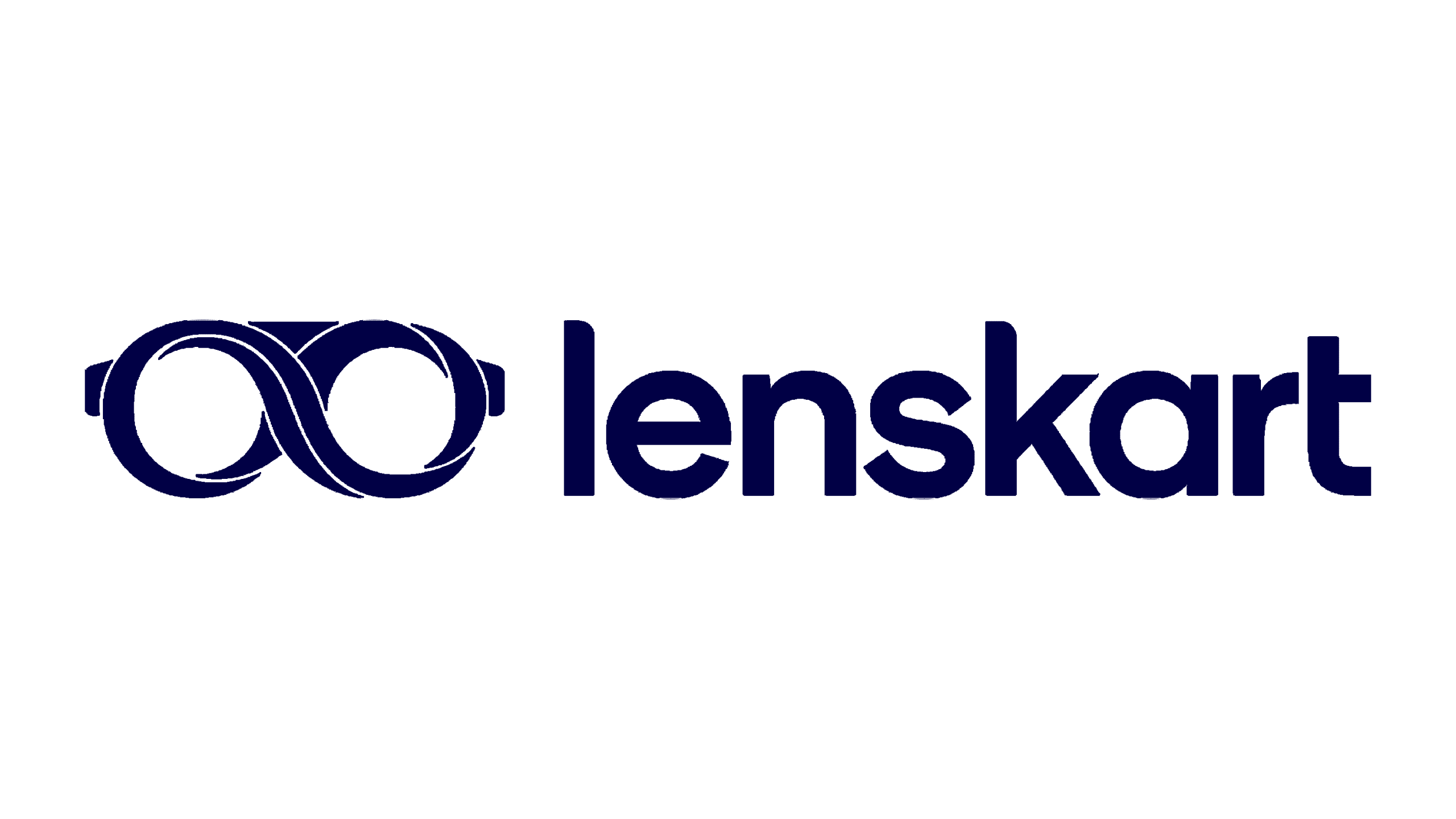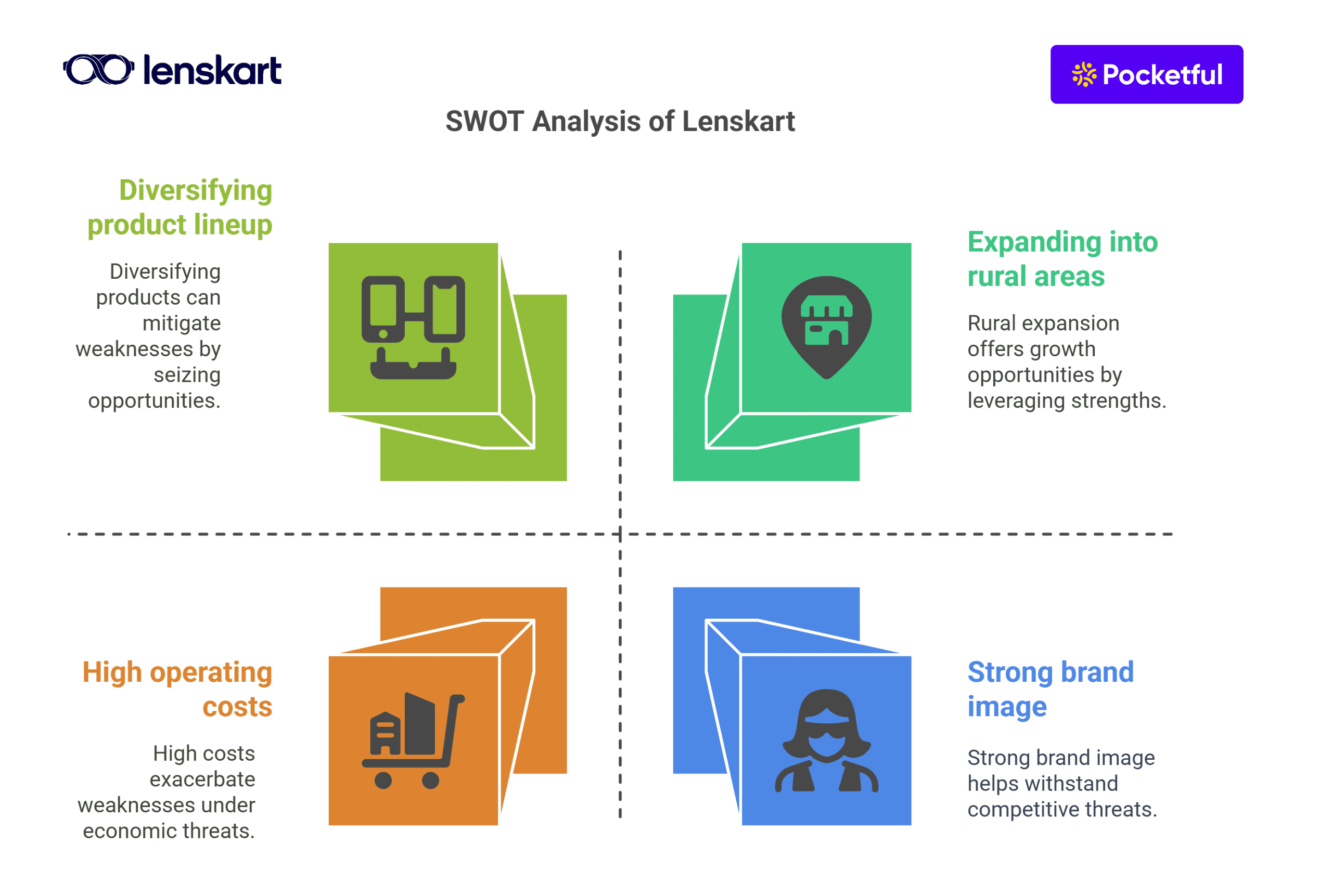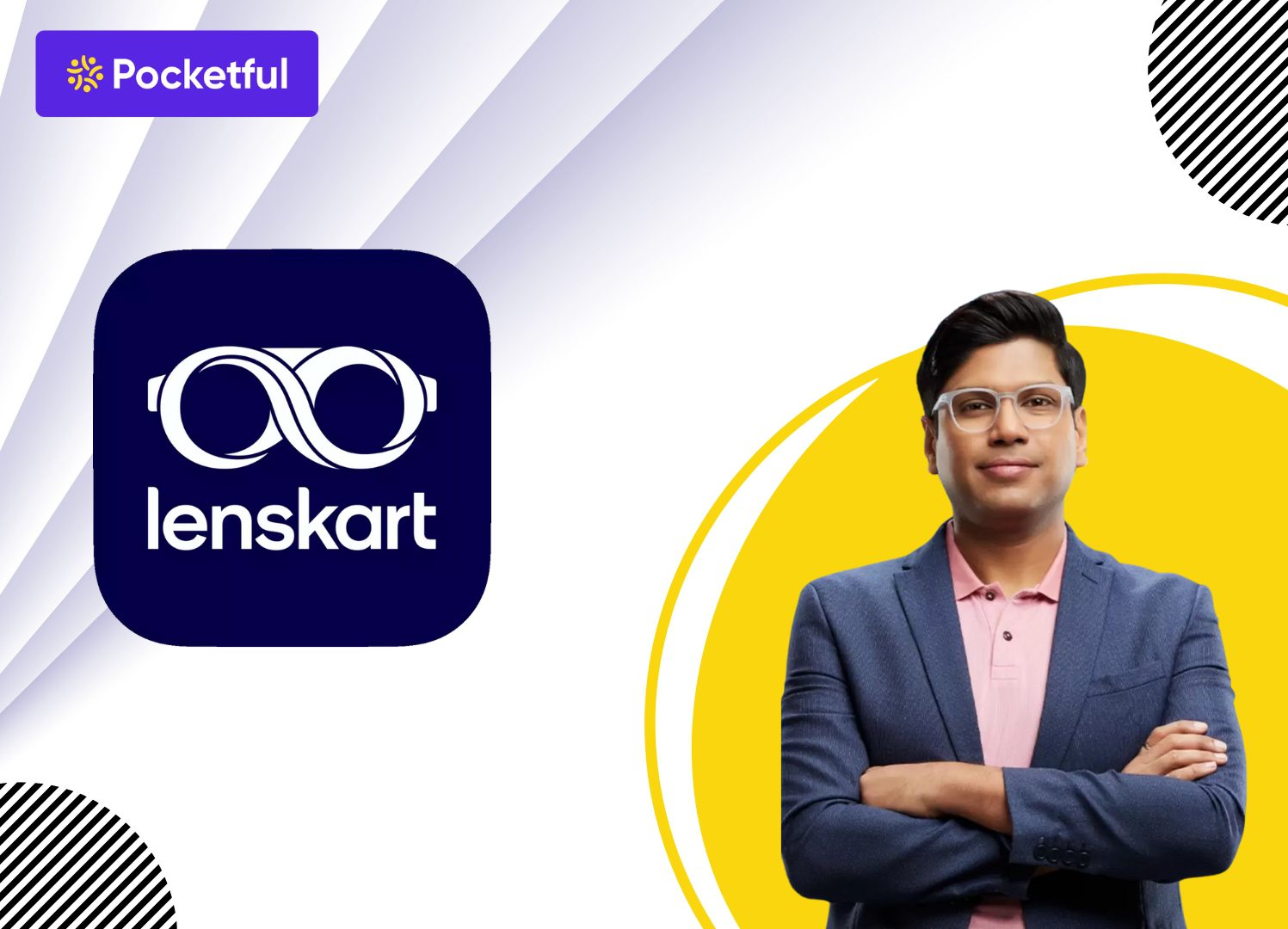India has a population of more than 140 crores and is a great market for eyewear. For the past many years, there have been eyewear shops available in local areas where one used to go and buy glasses. However, since 2010, a company has drastically changed the Indian eyewear industry by including technology, affordability, and a personalized experience for the consumer. The company is called “Lenskart”.
In this blog, we will dive deep into Lenskart’s history, marketing strategies that made it successful, and SWOT analysis.
Overview of Lenskart Company
Lenskart is an Indian eyewear brand founded in 2010 and is one of Asia’s largest eyewear brands. The company has changed the landscape of the Indian eyewear industry by offering users convenience to choose from a wide variety of spectacles from home. Customers can select the eyewear through their online store by trying it on using 3D technology. Later, the company also opened their offline stores as well.The company headquarters are situated in Gurugram.

History of Lenskart
The history of Lenskart can be divided into two phases: foundation and expansion.

Foundation
- Lenskart was founded in 2010 by Peyush Bansal, along with two other individuals, Amit Chaudhary and Sumeet Kaphai.
- Peyush was a former Microsoft employee and a dropout of IIM Bangalore.
- Initially he started Valyoo Technologies, which has four verticals such as watchkart, bagskart, jewelskart and lenskart.
- Among all the ventures, Lenskart emerged as the most promising one.
Expansion
- The company initially began as an eyewear retailer offering them at the lowest prices.
- In 2013, it introduced home eye checkup services that were not provided by any other player in the market.
- The company introduced a 3D technology through which a user can try eyewear virtually.
- In 2017, the company opened its retail store and began as an omnichannel model.
- By 2019, the company had opened more than a hundred stores across the country.
- By 2020, the company was valued at $1 billion and achieved the status of a unicorn.
- In 2021, the company began its manufacturing facility in Rajasthan.
- In 2022, The company acquired a controlling stake in a Japanese eyewear retail chain named OWNDAYS for $400 million.
- The company recently raised over $200 million from Temasek and Fidelity.
- The company opened more than 2,000 stores around the world, prominently in countries of Southeast Asia, UAE, and the USA.
Marketing Strategy of Lenskart
Lenskart has used impressive marketing strategies to help it establish itself as a prominent player in the optical industry. The marketing strategies are as follows:
- Omni-Channel Presence: Lenskart has a combined presence of both online and offline retail outlets. Through their mobile application and website, they offer a try-on feature for eyewear and they have more than 1500 stores across India.
- Digital Marketing: The company has a social media presence across different platforms like Facebook, YouTube, Instagram, etc. They have various strategic collaborations with various lifestyle and fashion influencers. They have a dedicated team of SEO and content marketing, which primarily focuses on enhancing brand visibility.
- Celebrity Endorsements: They have renowned celebrities like Katrina Kaif, Bhuvan Bam, etc., as their brand ambassadors.
- Pricing: They offer competitive prices and discounts to their customers, through which they stay ahead of the competition.
- Manufacturing: They make their glasses, lenses and frames at their in-house manufacturing facilities, which ensures quality and pricing controls.
Product Portfolio of Lenskart

The product portfolio of Lenskart includes the following products:
- Prescription Glasses: The company offers all kinds of power glasses, such as single vision, bifocal, progressive, etc.
- Frame: It offers a wider range of designs and frames, including rimless, half-rim and full rim.
- Sunglasses: The company’s product portfolio also includes all kinds of sunglasses, ranging from aviator, cat-eye, etc. to protect from UV.
- Contact Lenses: Contact lenses of top brands such as Bausch Lomb, Alcon, etc. are available at Lenskart. Along with this, they also have their own brand of contact lenses named Aqualens.
Business Model of Lenskart
The business model of Lenskart is mentioned below:
- They have a presence across all channels, offering its products to customers through both digital and retail channels.
- Lenskart doesn’t compromise with the quality of the product; therefore, they have their manufacturing unit, allowing them to control cost and quality.
- The company also offers a subscription program named “Lenskart Gold”, which allows them to have a recurring revenue source.
SWOT Analysis of Lenskart

Strengths
- The company has a strong brand image because of collaborations with various celebrities.
- It offers its products at affordable rates, which helps it in staying ahead of the competition.
- Their customer-centric services, such as home eye testing, free eye checkups, help them establish themselves as a distinguished entity in the eyewear industry.
Weakness
- The company’s primary revenue comes from the urban areas, hence they are heavily reliant on urban customers.
- Lenskart primarily focuses on eyewear and thus doesn’t have diversified revenue streams.
- The company’s offline store adds to its high operating costs and therefore reduces profits.
Opportunities
- The company can expand itself in the rural areas, which provides them with better growth opportunities.
- Lenskart can add various other products to its product lineup and have a diversified source of revenue.
- With the rise in smartphone usage, the demand for protective eyewear will also increase, which can lead to an increase in the company’s revenue.
Threats
- The company faces intense competition from the local manufacturers, along with other established brands like Titan.
- Any economic downturn might lead to a decrease in demand for eyewear and protective sunglasses.
- With advancement in medical technologies, the eye treatment costs are getting cheaper; hence, instead of buying eyewear and contact lenses, people are increasingly preferring eye surgeries over eyeglasses.
Conclusion
On a concluding note, Lenskart has changed the landscape of the Indian eyewear industry by successfully integrating offline trust with online convenience. They primarily focus on latest technology and offer the customer the convenience to try on frames using their smartphones and laptops at home. They filled the gap between traditional eyewear and stylish eyewear by introducing trendy eyewear frames. They have strategically partnered with various celebrities, which helps them enhance their brand visibility. In the past 15 years, it has established itself as a prominent player in the Indian eyewear market.
Frequently Asked Questions (FAQS)
Who is the owner of Lenskart?
Lenskart is owned by Peyush Bansal, the founder and current CEO of the company.
Where is the headquarters of Lenskart situated?
The headquarters of Lenskart are situated in Gurgaon.
Is Lenskart a unicorn company?
Yes, Lenskart is a unicorn company, and its valuation is more than $1 billion.
Is Lenskart a listed company?
No, Lenskart is not a listed company. However, there are rumours that the company is expected to launch its IPO in 2025.
Is John Jacob an Indian brand?
Yes, John Jacobs is an Indian brand launched by Lenskart in 2017.


